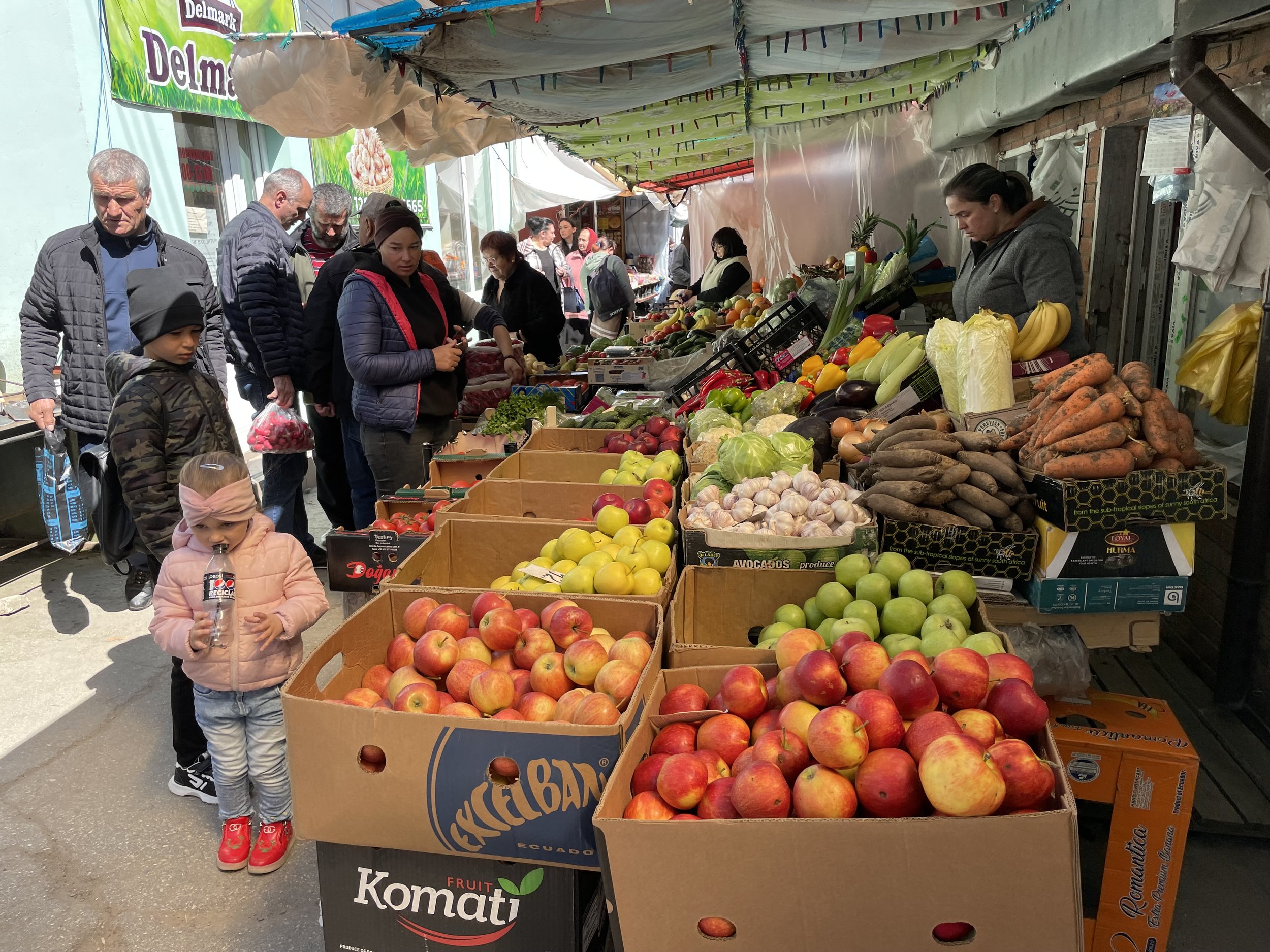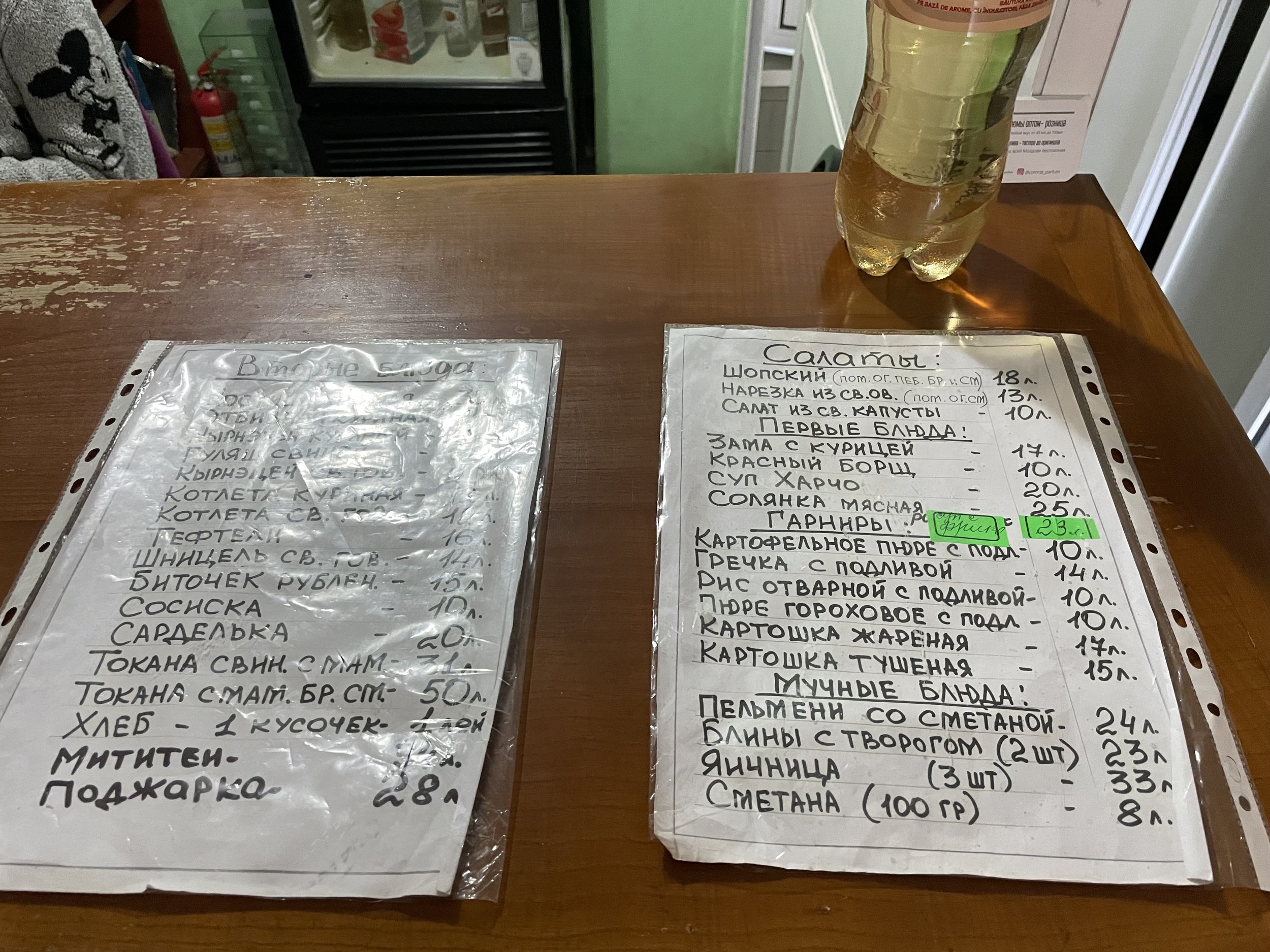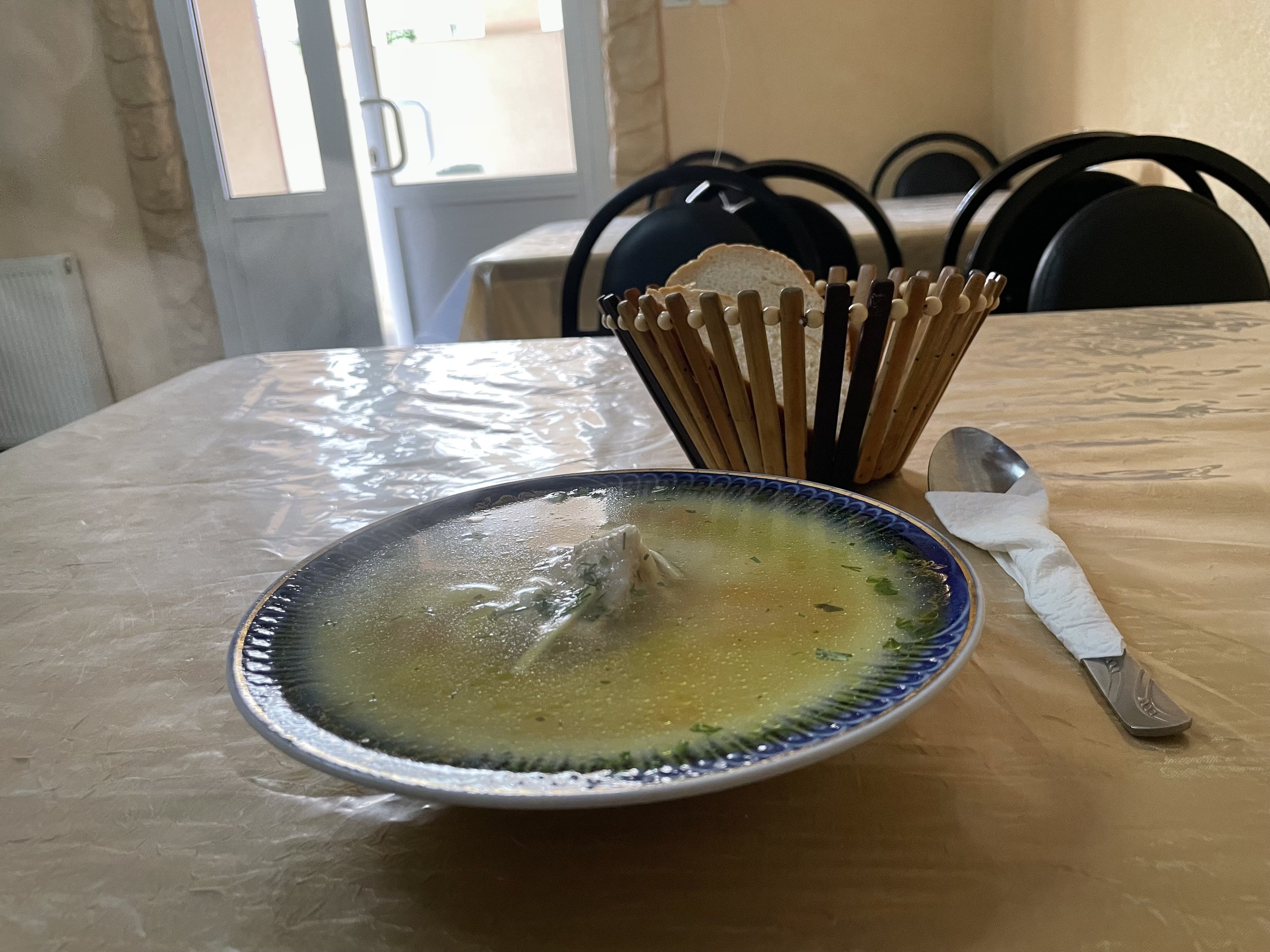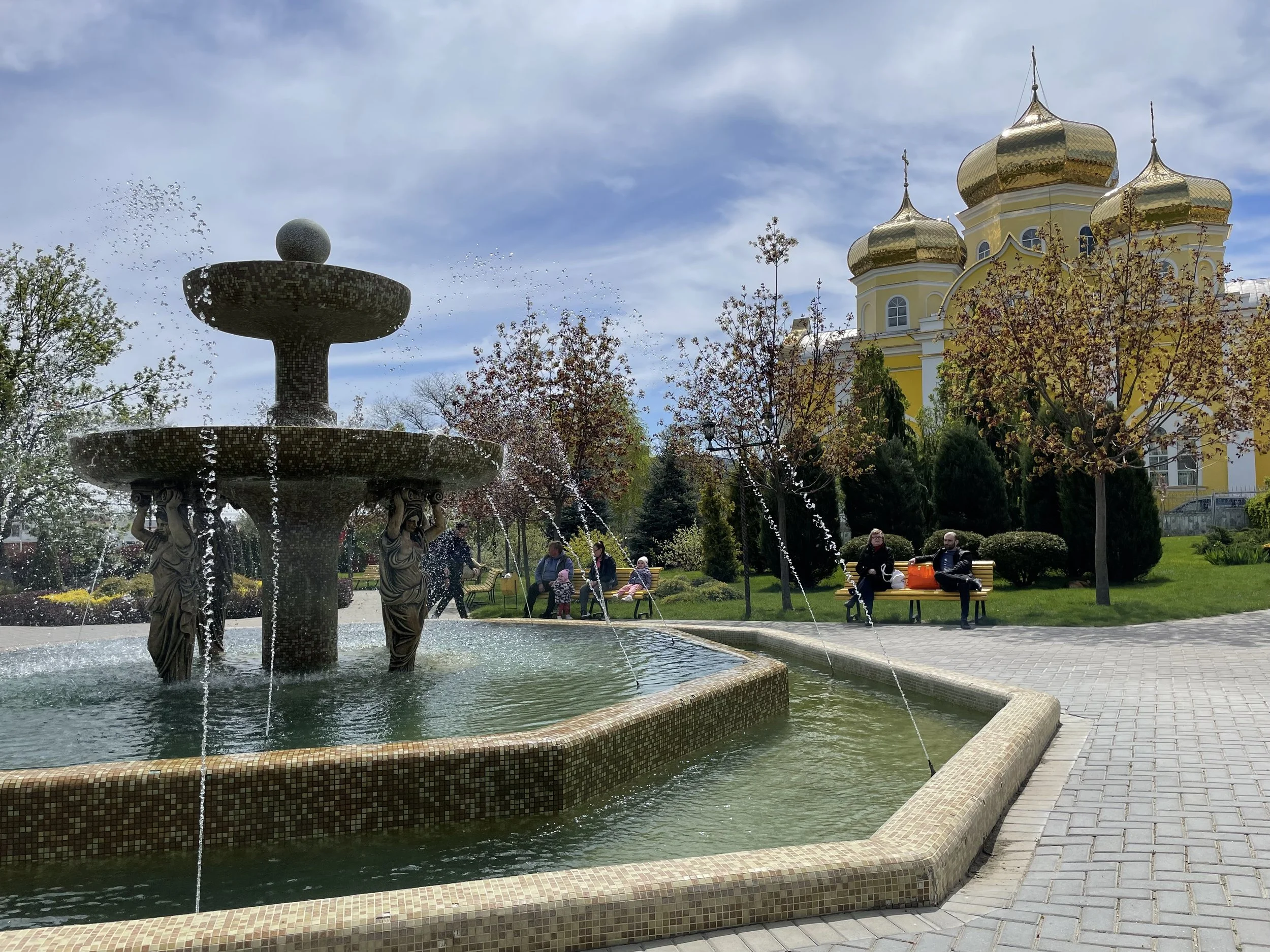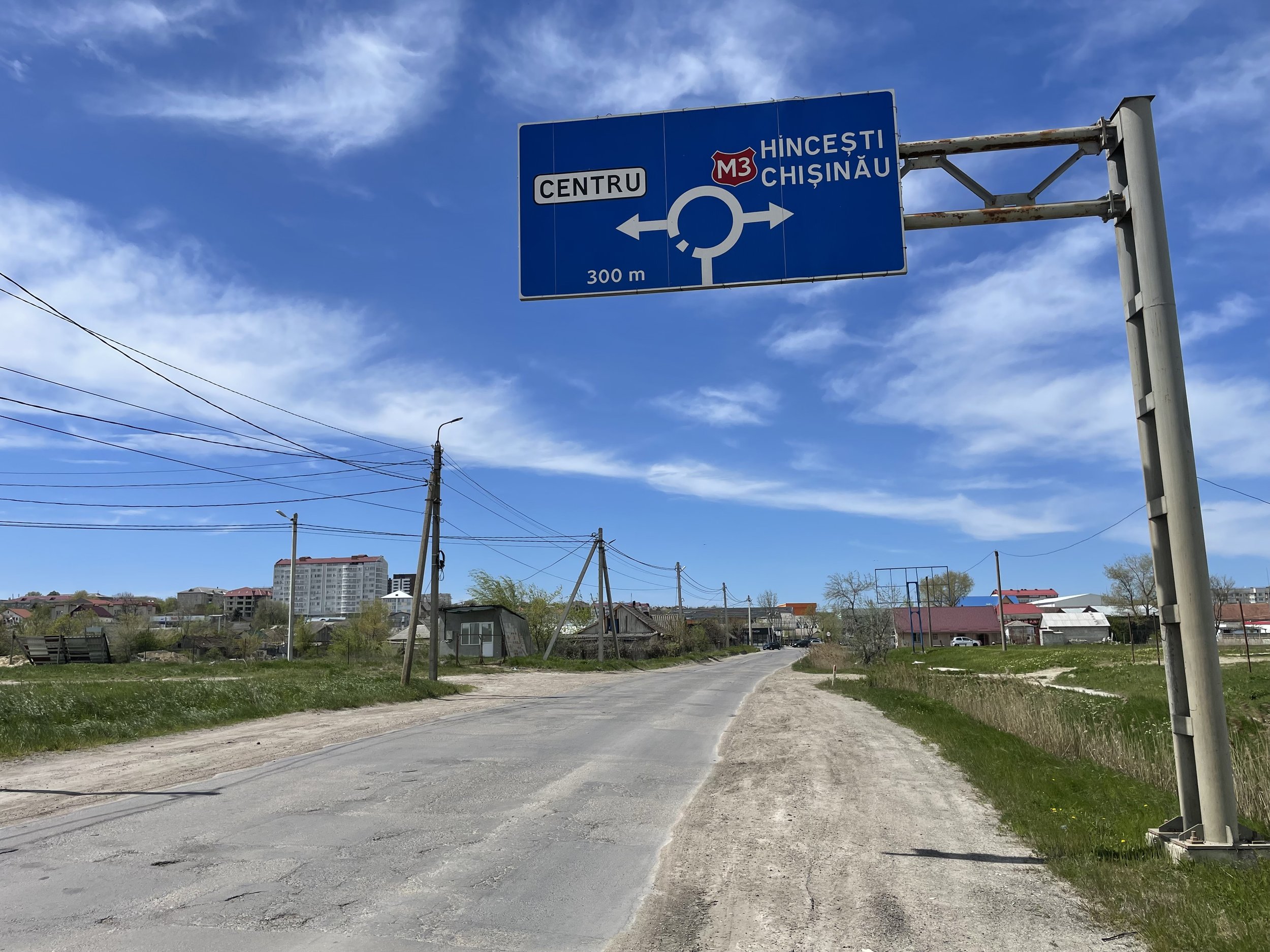Gagauzia
Between 1990 and 1994 Gagauzia was an independent republic. The capital Comrat isn’t much bigger than 20.000 inhabitants. The city is home to the Gagauz people. The historical origin of the Gagauz people is not clear. They may be descendants of Turkic nomadic tribes, they could be Turkified Bulgarians or they are of Greek origin keeping their Greek Orthodox religion but linguistically assimilated. What is clear is that the Russian Empire allocated land to the Gagauz in a region of Bessarabia, which lies now within Moldavian borders.
Even today, in Gagauzia Russian is predominantly spoken. Schools are Russian language schools. Everything is in Russian. Gagauz is only spoken by a few Gagauz. The ties with Russia are strong. Many people only consume Russian news sources.
Arriving in Comrat feels like arriving in a dusty Western town. It’s worlds apart from the capital Chișinău. As the capital of the Autonomous Territorial Unit of Gagauzia the town has a lively market and many shops selling agricultural and building machines. It is an excellent place to buy a concrete mixer or a wheelbarrow, if you need one.
Comrat bus station.
Gagauz Republic 1990–1994. Map of the territory claimed by the Gagauz Republic. It did not control all of these lands.
When I arrived in Comrat it was just a few weeks before elections for governor of Gagauzia on 30 April 2023. The pro-Russian candidate for the Șor Party, Evghenia Gutul, won the second round of voting on 14 May. The Șor Party is led by the fugitive oligarch Ilan Shor. He was convicted of stealing $1 billion from the banking system between 2012 and 2014. The Russian President Vladimir Putin promised free gasoline, so it is not surprising a pro-Russian candidate is now governor of Gagauzia.
Below an election billboard of bearded Grigorii Uzun supported by the Socialist Party. He was leading the polls but he lost in the second round with 47.66% of the vote against Gutul who received 52.34%.
Comrat is so small I had trouble finding a restaurant for lunch. There was practically nothing open, apart from a kebab stall on the street and many places just serving coffee and plăcintă-like pastry. In the end I googled a tiny place off the main street. I found some identity papers just in front of the restaurant so I handed them to the girl behind the counter. When I was eating my chicken soup, a man walked in and before I could react, he slapped a 50 lei banknote (€ 2,60) on my table and walked out.
I was puzzled and I asked the girl why the unknown man gave me a 50 lei note. She said it was a reward for handing over his identity card. Apparently she had called the man. I tried to give the 50 lei to the girl with the request to give it to somebody who needs it, but she refused. In the end I used Google Translate to tell her I would donate it myself to somebody on the street.
After lunch I coulnd’t figure out what to do in Comrat. After just a few hours I had walked every street. 93% of Gagauz adhere to Eastern Orthodox Christianity. The bright yellow Saint John the Baptist Cathedral in Comrat lies next to a pleasant park. The cathedral was either built in 1820 or 1840. During Soviet times it was closed and ceased to function as a church until it was reopened after the collapse of the Soviet Union. The cathedral is probably the only tourist attractions in Comrat, unless you want to purchase a concrete mixer.



